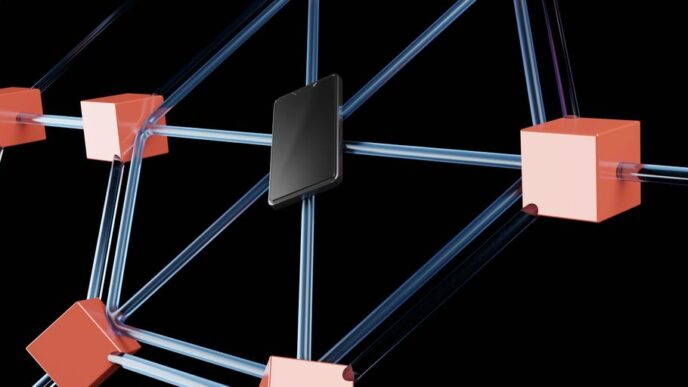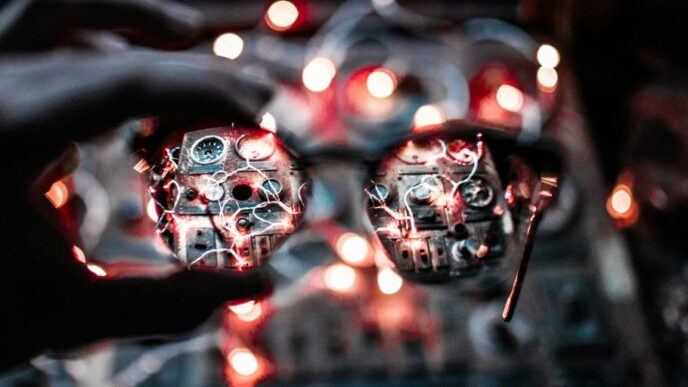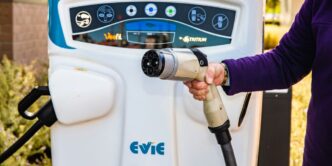Wildfires pose a significant threat to California, and traditional methods of detection are often too slow to prevent widespread damage. However, advancements in artificial intelligence (AI) are changing the game. AI-driven fire detection systems are now being used to identify fires early, allowing for quicker responses and potentially saving lives and property. These systems work by continuously monitoring vast areas and analyzing data to spot signs of fire before they escalate. This article explores the role of AI in wildfire management, highlighting its benefits, challenges, and future prospects.
Key Takeaways
- AI cameras can quickly spot fires, allowing firefighters to respond faster.
- Public-private partnerships are key to developing effective AI tools for fire detection.
- Real-time data helps firefighters make better decisions during emergencies.
- AI systems need careful oversight to ensure they are accurate and respect privacy.
- The future looks bright for AI in wildfire management, with potential for even broader use.
The Role of AI in Early Wildfire Detection
How AI Cameras Identify Fires
AI cameras are a game changer in spotting wildfires early. They use advanced technology to monitor large areas continuously. When they detect smoke or heat, they send alerts to firefighters. This quick detection can save lives and property. For example, in Humboldt County, an AI camera spotted a fire before it could spread, allowing firefighters to respond swiftly.
The Importance of Rapid Response
A fast response is crucial in wildfire management. Here are some key reasons why:
- Prevention of large-scale damage: Early action can stop a small fire from becoming a massive blaze.
- Safety for communities: Quick responses protect homes and lives.
- Resource efficiency: It saves time and money by reducing the need for extensive firefighting efforts later.
Case Studies of Successful Early Detections
Several instances highlight the effectiveness of AI in wildfire detection:
- Humboldt County: An AI camera detected a fire early, allowing firefighters to contain it to just a quarter of an acre.
- Grass Valley: AI alerted firefighters to a potential fire before any 911 calls were made, showcasing its speed.
- Santa Clara County: AI sensors identified smoke from a wildfire, enabling a quick response that minimized damage.
The integration of AI in wildfire detection is not just about technology; it’s about protecting our communities and natural resources.
By using AI, California is setting a standard for wildfire management that other states can follow.
Public-Private Partnerships Enhancing Wildfire Management
Collaborations Between CAL FIRE and Private Companies
Public-private partnerships are crucial in enhancing wildfire management in California. These collaborations leverage the strengths of both sectors to create innovative solutions. For instance, CAL FIRE has teamed up with various tech companies to develop AI-driven tools that improve fire detection and response times. This teamwork allows for:
- Faster deployment of resources
- Enhanced data analysis capabilities
- Improved communication between agencies
The Role of PG&E in AI Development
Pacific Gas and Electric (PG&E) plays a significant role in the development of AI technologies for wildfire detection. By investing in AI systems, PG&E aims to reduce risks associated with wildfires. Their efforts include:
- Supporting the creation of a forest surveillance network.
- Collaborating with tech firms to refine detection algorithms.
- Implementing AI tools to monitor power lines and prevent ignitions.
Benefits of Market-Driven Innovation
The involvement of private companies in wildfire management brings several advantages:
- Increased efficiency in technology development.
- Greater competition leads to better products.
- Cost-effective solutions that can be rapidly deployed.
The integration of AI with traditional fire management practices can significantly improve early detection and response, reducing the impact of wildfires.
By fostering these partnerships, California is setting a precedent for other states to follow, showcasing how market-driven innovation can enhance public safety and environmental protection.
Technological Advancements in AI-Driven Fire Detection

The Evolution of AI Fire Detection Tools
AI technology has come a long way in helping firefighters detect wildfires early. These advancements are crucial for saving lives and property. The tools have evolved to include:
- AI Cameras: These cameras can spot smoke and heat signatures from a distance.
- Advanced Sensors: Devices that detect gas and chemicals, alerting teams to potential fires.
- Data Analysis: AI systems analyze historical data to improve detection accuracy.
Integration of Sensors and Cameras
The combination of sensors and cameras creates a powerful detection system. For example, firefighters on the Peninsula now use AI technology to identify what is burning and where. This integration allows:
- Continuous monitoring of vast areas.
- Quick alerts to fire departments when anomalies are detected.
- Enhanced situational awareness for firefighters in the field.
Real-Time Data Analysis and Response
Real-time data is essential for effective wildfire management. AI systems provide:
- Immediate alerts when a potential fire is detected.
- Estimated locations and certainty percentages for incidents.
- Actionable insights to help firefighters respond quickly.
The use of AI in fire detection not only improves response times but also helps in making informed decisions that can save lives and protect communities.
Challenges and Solutions in Implementing AI Systems
Ensuring Accuracy and Reliability
Implementing AI systems for wildfire detection comes with challenges, especially in ensuring accuracy and reliability. AI must be trained on diverse data to recognize fire accurately. If the data is limited or biased, the system may fail to detect fires or produce false alarms. To address this, continuous training and updates are essential. Regular assessments can help maintain the system’s effectiveness.
Balancing Innovation with Regulation
As AI technology evolves, it is crucial to find a balance between innovation and regulation. While rapid advancements can improve wildfire management, they must also comply with safety standards. Establishing clear guidelines can help ensure that AI systems are both effective and safe for public use. Collaboration between tech developers and regulatory bodies can foster a supportive environment for innovation.
Addressing Privacy Concerns
The use of AI in public spaces raises privacy concerns. Surveillance cameras and data collection can lead to fears about personal privacy. To mitigate these concerns, transparency is key. Public awareness campaigns can inform communities about how data is used and protected. Additionally, implementing strict data usage policies can help build trust between the public and AI developers.
The integration of AI in wildfire management is a powerful tool, but it must be approached with care to ensure it benefits everyone without compromising safety or privacy.
Summary of Challenges and Solutions
| Challenge | Solution |
|---|---|
| Accuracy and Reliability | Continuous training and regular assessments |
| Innovation vs. Regulation | Clear guidelines and collaboration |
| Privacy Concerns | Transparency and strict data policies |
Impact of AI on Firefighting Strategies
Reducing Watch Fatigue Among Firefighters
AI technology helps reduce the burden on firefighters by automating the monitoring process. This allows them to focus on more critical tasks. Here are some key benefits:
- Less stress: Firefighters can rely on AI to alert them to potential fires.
- Increased efficiency: AI can monitor vast areas continuously.
- Better resource allocation: Firefighters can prioritize their efforts based on AI alerts.
Improving Situational Awareness
AI systems provide real-time data that enhances situational awareness for firefighting teams. This includes:
- Instant alerts: AI detects fires faster than traditional methods.
- Detailed analytics: Firefighters receive data on fire behavior and spread.
- Visual aids: AI cameras offer live feeds to help teams assess situations.
Enhancing Decision-Making with Data
AI-driven insights support better decision-making in firefighting strategies. Key points include:
- Data-driven responses: AI analyzes historical data to predict fire behavior.
- Resource management: AI helps in planning resource deployment effectively.
- Training simulations: AI can create scenarios for training purposes.
The integration of AI in firefighting not only saves lives but also protects our natural resources. AI tools are becoming essential in modern firefighting strategies, allowing for quicker and more effective responses to wildfires.
Future Prospects of AI in Wildfire Management
Expanding AI Capabilities
The future of AI in wildfire management looks promising. AI technology is evolving rapidly, allowing for better detection and response systems. Here are some key areas of growth:
- Enhanced Algorithms: Improved algorithms will increase the accuracy of fire detection.
- Integration with Drones: Drones equipped with AI can monitor vast areas and provide real-time data.
- Predictive Analytics: Using historical data to predict fire outbreaks can help in proactive measures.
Potential for Broader Adoption
As more regions face wildfire threats, the adoption of AI systems is likely to grow. This includes:
- Training Programs: Educating firefighters and emergency responders on AI tools.
- Funding Initiatives: Increased funding from both public and private sectors to support AI development.
- Community Engagement: Involving local communities in wildfire prevention strategies using AI.
Long-Term Benefits for Communities
The integration of AI in wildfire management can lead to significant long-term benefits:
- Reduced Damage: Early detection can minimize property damage and loss of life.
- Cost Efficiency: AI can lower the costs associated with firefighting efforts.
- Sustainable Practices: Promoting sustainable land management practices through data-driven insights.
The use of AI in wildfire detection represents a significant advancement in California’s efforts to prevent and manage wildfires. By expanding the role of the free market and fostering public-private partnerships, we can drive innovation and efficiency in wildfire prevention.
In conclusion, the future of AI in wildfire management is bright, with the potential to save lives and protect our natural resources.
Case Studies of AI in Action During California Wildfires
Humboldt County Redwood Forest Fire
On September 5, 2023, a wildfire ignited in a redwood forest in Humboldt County. Thanks to over a thousand AI cameras deployed across California, the fire was quickly spotted. The California Department of Forestry and Fire Protection (CAL FIRE) was alerted right away, allowing firefighters to contain the blaze to just a quarter of an acre. This rapid response showcases the effectiveness of AI in wildfire detection.
Santa Clara County Wildfire Detection
In Santa Clara County, new AI sensors have been installed to monitor for wildfires. These sensors can detect smoke and chemicals, alerting fire departments immediately. They can even distinguish between different types of fires, such as a barbecue or a wildfire, based on the unique characteristics of the smoke. This technology is especially useful in areas where urban settings meet dry landscapes.
Grass Valley Early Detection Success
On September 11, 2023, an AI camera detected a potential fire near Grass Valley at 5:19 a.m. Firefighters were already on the scene before the first 911 call came in at 6:01 a.m. This early detection allowed them to keep the fire contained to less than a quarter of an acre. The success of this program highlights the importance of AI technology in enhancing wildfire management strategies.
Conclusion
In summary, AI-powered fire detection systems are changing the way California manages wildfires. These smart tools help firefighters spot fires early, which is crucial for keeping communities safe. With the help of advanced cameras and sensors, firefighters can respond quickly, often before anyone even calls 911. This technology not only saves lives but also protects homes and nature. As wildfires become more common, using AI responsibly will be key to improving our response and keeping our state safe. California’s success can inspire other states to adopt similar strategies, making a big difference in wildfire management across the country.
Frequently Asked Questions
What is an AI-driven fire detection system?
An AI-driven fire detection system uses smart cameras and sensors to spot wildfires early. These systems analyze data to find signs of fire and alert firefighters quickly.
How does AI help in detecting wildfires?
AI helps by continuously watching large areas and looking for unusual changes that might indicate a fire. When it finds something, it sends a warning to the firefighters.
Why is quick response to wildfires important?
A quick response is vital because it helps stop small fires from becoming big ones. The sooner firefighters know about a fire, the easier it is to control it.
What are some examples of successful fire detections?
One example is the Humboldt County fire in September 2023, where AI cameras spotted a fire early, allowing firefighters to keep it small.
Are there any challenges with using AI for fire detection?
Yes, challenges include making sure the technology is accurate, following rules, and keeping people’s privacy safe.
What does the future hold for AI in wildfire management?
The future looks bright! AI technology is expected to improve even more, helping more areas adopt these systems and benefiting communities in the long run.













